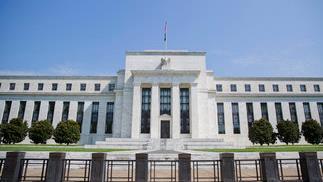Fed hikes interest rates amid rising inflation
The Federal Reserve on Wednesday raised short-term interest rates for the third time this year.
The U.S. central bank’s Federal Open Market Committee (FOMC) increased its benchmark federal funds rate by a quarter-percentage point, setting a range of 2 percent to 2.25 percent, and continued to forecast one more rate hike in 2018.
The policy-setting board also removed the word “accommodative” from its statement to describe their position on interest rates. The move indicates that the Fed, encouraged by rising inflation and strong U.S. hiring, is inching closer to the end of the current rate-hike cycle.
During a press conference, Fed Chairman Jerome Powell said the removal of “accommodative” does not signal a change in the Fed’s policy plans. Rather, it indicates that the FOMC is moving in line with its expected path, he said.
Most policymakers expect to hold steady on interest rates sometime in 2020, which would leave the federal funds rate in a range of 3.25 percent to 3.5 percent. The long-run rate is estimated to be 3 percent.
Officials have been rolling back accommodative monetary policies initially employed after the 2008 financial crisis. The Fed has indicated it will continue to gradually raise rates at least through 2019, a strategy used to prevent the economy from growing too fast and keep prices from spiking. The decision to raise rates Wednesday was the eighth hike since 2015. It also began to process of winding down its massive portfolio of government debt and mortgage-backed securities in late 2017.
Investors have expected the Fed to increase the federal funds rate a total of four times this year with the next rate hike likely in December. The Fed forecast an additional three rate increases in 2019 and one in 2020.
Economists believe U.S. economic conditions will allow the Fed to remain on track. The Fed raised its estimate for gross domestic product (GDP) growth to 3.1 percent this year, and it sees unemployment falling to a rate of 3.5 percent in 2019.
Powell said more companies have raised concerns about new import tariffs, but the global trade dispute has yet to impact economic numbers. Widespread tariffs over the long term would be a negative development for the U.S. economy, he added.
The Federal Reserve Bank of Atlanta’s GDPNow estimate has called for economic growth of 4.4 percent in the third quarter, which would mark the second consecutive quarter of gains over 4 percent. In August, wages posted their largest annual gain since 2009, while the unemployment rate remained at 3.9 percent, near its lowest level since 2000.
Fed officials affirmed their outlook that inflation will remain near a target of 2 percent annual growth through 2021. The core personal consumption expenditures (PCE) index, the Fed’s preferred measure of inflation, has hit the central bank’s target three times this year.




















